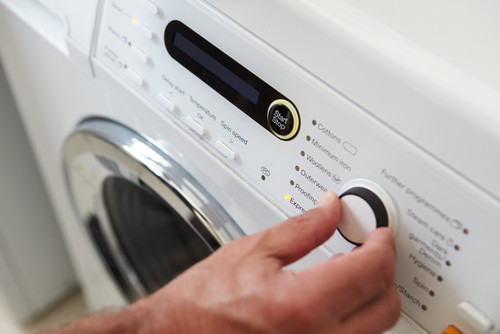5 Differences Between Laundry Cleaning and Dry Cleaning (Updated)

5 Differences Between Laundry Cleaning Versus Dry Cleaning
Want to know if dry cleaning or laundry cleaning is more suitable for you? The number of people who use professional companies to clean their dirty laundry has increased. The professional services save the homemakers time, and also delivers clothes that are cleaned thoroughly and treated with care.
Depending on the dirt and the fabric type, you can dry or wet launder your clothes. The dirty clothes are manually inspected and stained spots are specially treated with chemicals. Professional launderers use modern cleaning equipment that uses a specific amount of solvents and detergents, for maximum efficiency. The washed clothes are finally pressed and folded.
When you decide to send your garments for cleaning, you should know the basic differences between dry and laundry cleaning.

Basic Differences Between Dry and Laundry Cleaning
1. Dry cleaning process uses a chemical solvent to rinse the garments. It is called ‘dry’ cleaning because water is not used in the cleaning process. The traditional wet laundering method involves the immersion of your clothes in water.
2. Dry cleaning process is done using the chemical perchloroethylene to remove stains and grease from clothing. Laundry cleaning uses cleaning agents like soaps, detergents or softeners along with water to remove dirt from clothing.
3. The dry cleaned clothes are then loaded in a machine and washed using the process called tumbling. The solvents used in the process are generally removed and recycled. In laundry cleaning, the clothes are tumbled in a machine and the detergent works with water to remove the dirt particles during the agitation process.
4. The garments in the dry cleaning process are dried with the help of dry cleaning machines. In laundry cleaning, water is removed from the garments using the spinning process. After this, the clothes are dried in a drier or hung dried.
5. Dry cleaned clothes are steamed or ironed to straighten them. Finally, they are ready for delivery. In the laundry, cleaning cloths are pressed or steamed.

Benefits of Dry Cleaning Process
* Effectively removes grease and tough to remove oil stains.
* Reduces shrinkage and distortion of the fabric.
* Minimizes discoloration and reduces bleeding.
* Originality of the material is maintained.
* Protects texture and increases the lifespan of clothes.
* With technology advancements, dry cleaning companies have started to use environmentally- friendly cleaning products that disintegrate easily and less harmful. These solvents do not produce odor and your clothes smell fresher and feel better.
Benefits of Laundry Cleaning

* They do not use harmful chemicals that can be harmful to you and the environment.
* People with sensitive skin may have negative reactions to the chemicals used for dry cleaning process.
* It is much cheaper as the solvent used is water and detergent or softener, and these give a freshness to your clothes.
- Unlike dry cleaned clothes, laundered clothes are free from chemical odor. Softening agents added give a pleasant smell to your clothes.
* Wet laundering is energy efficient; it consumes 50% less energy than the energy used for dry cleaning.
Before you choose to dry clean or wet clean your clothes, you should know the limitations and benefits of each process and your garment material. If you are not sure, then get professional advice from laundry cleaning companies. It is wise to use the right process of washing on the right fabric to get the best benefit.





